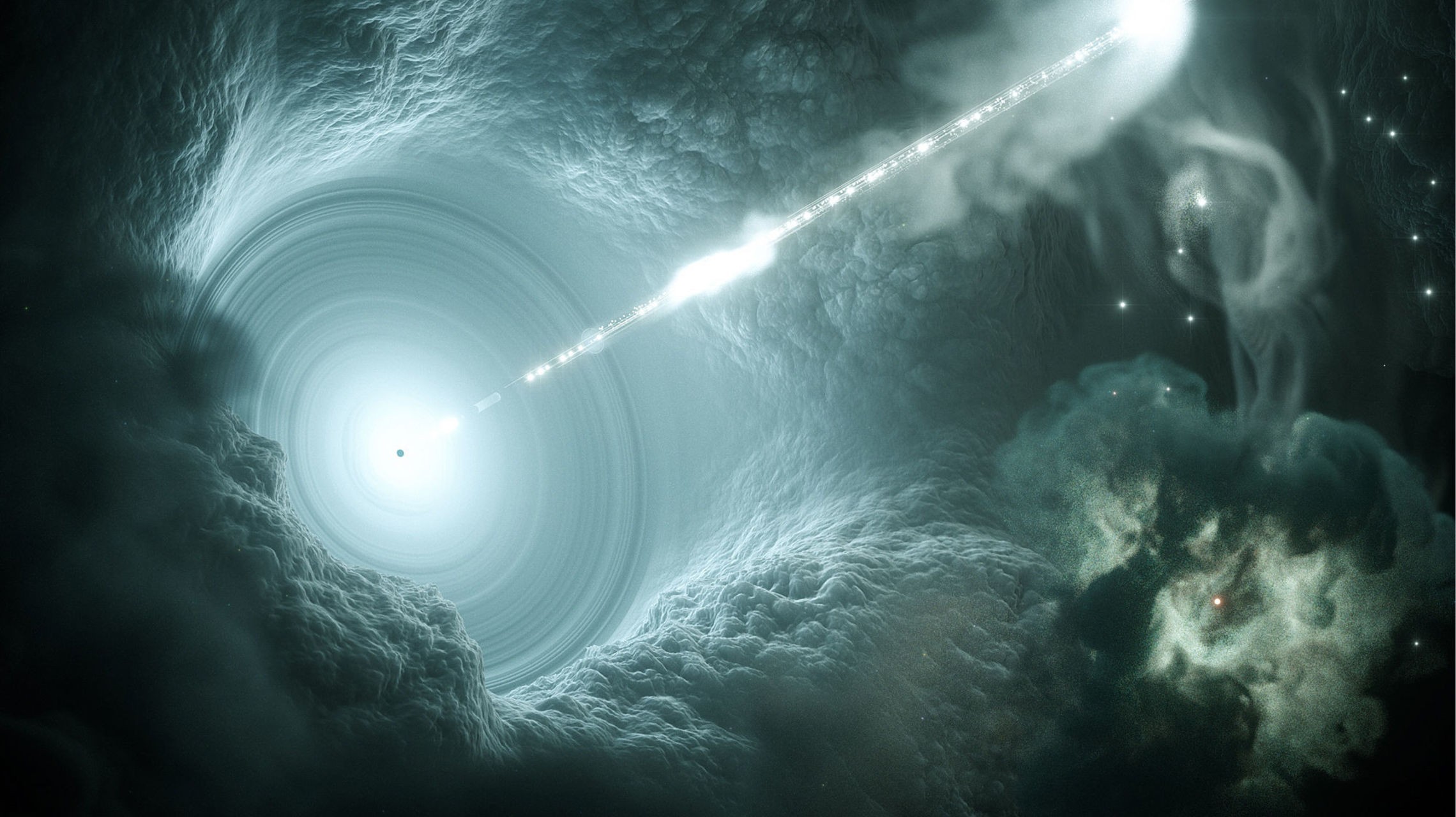Astronomers from the University of Arizona have isolated the presence of a quasar 13.03 billion light-years from Earth, evolving as the universe was only 5% of its current age. It is to date the most distant quasar ever discovered.
A quasar is a very energetic galaxy with a very active nucleus at its center due to the presence of a supermassive black hole ingesting matter. The object then emits a lot of energy in the form of electromagnetic radiation (radio, IR, visible, UV, X), and therefore appears very bright. Quasars ultimately arise as "light versions" of black holes.
What astronomers are announcing today is the discovery of the most distant quasar known to date (and by extension, the oldest). Found 13.03 billion light-years away , J0313-1806 (his name) hosts a supermassive black hole whose mass is equivalent to those of more than 1.6 billion suns .
This "new" quasar is about twenty million light years further away than the previous record holder. It also contains a supermassive black hole at least twice as heavy. This new discovery therefore marks a significant advance in the field of cosmology, as it provides the strongest constraint to date on the formation of black holes in the early universe.

These incredibly massive quasars evolving at a time when the universe was still very young pose a real challenge to astronomers. This indeed raises a question:how did they get so big in such a short time?
The most commonly accepted formation process involves the collapse of a massive star exploding as a supernova at the end of its life. By amassing matter over time, they can theoretically transform into supermassive objects. However, just as it takes many lifetimes to build up a retirement fund by receiving only one euro each year, the quasars of the early universe look a bit like very young millionaires. In other words, to get so big in such a short time, they necessarily acquire mass by other means. Also, this first option is discarded.
A second model this time involves dense star clusters collapsing into a massive black hole from the start. But then again, J0313-1806 harbors a black hole too massive to be able to form through this process . According to calculations, if the black hole at its center formed as early as 100 million years after the Big Bang and grew as fast as possible, it could only display a mass equivalent to that of 10,000 suns. .
“In other words, the seed of this black hole must have been formed by a different mechanism “Says Xiaohui Fan, from the University of Arizona and co-author of the study. The third option, chosen by the researchers, here involves large amounts of cold, primordial hydrogen gas collapsing directly into a black hole.
Since this mechanism does not require stars as "raw material", it is the only one that would allow this black hole to grow so much in such a short time.